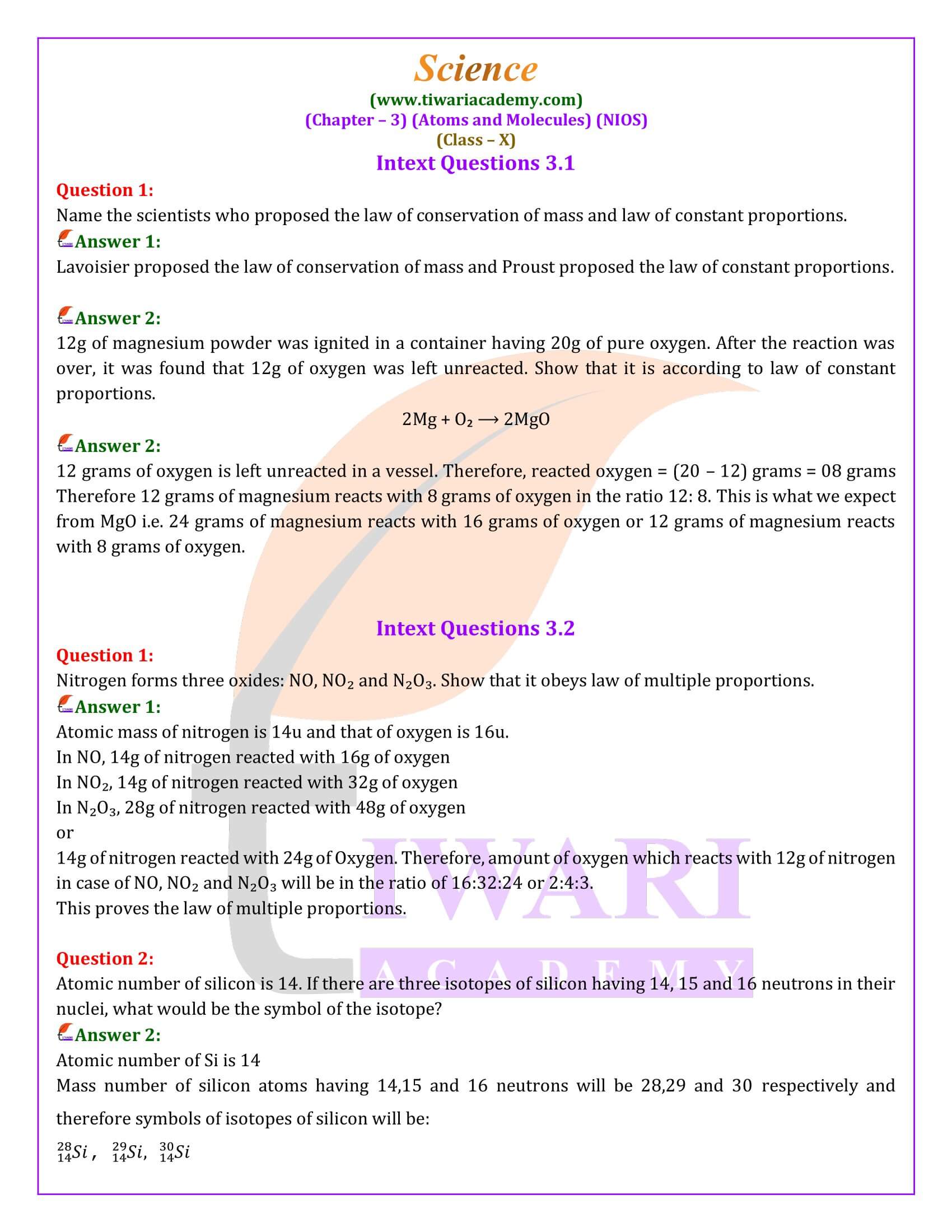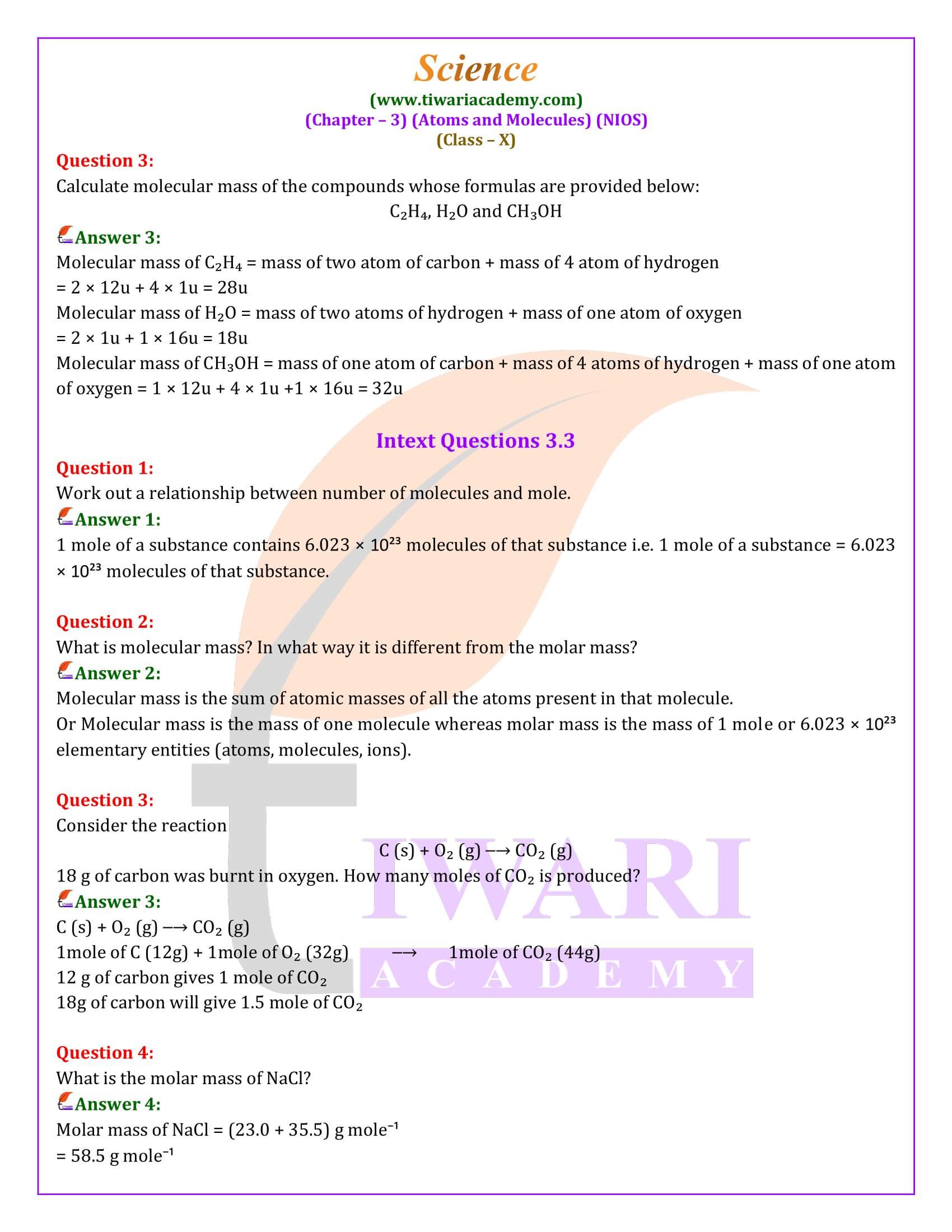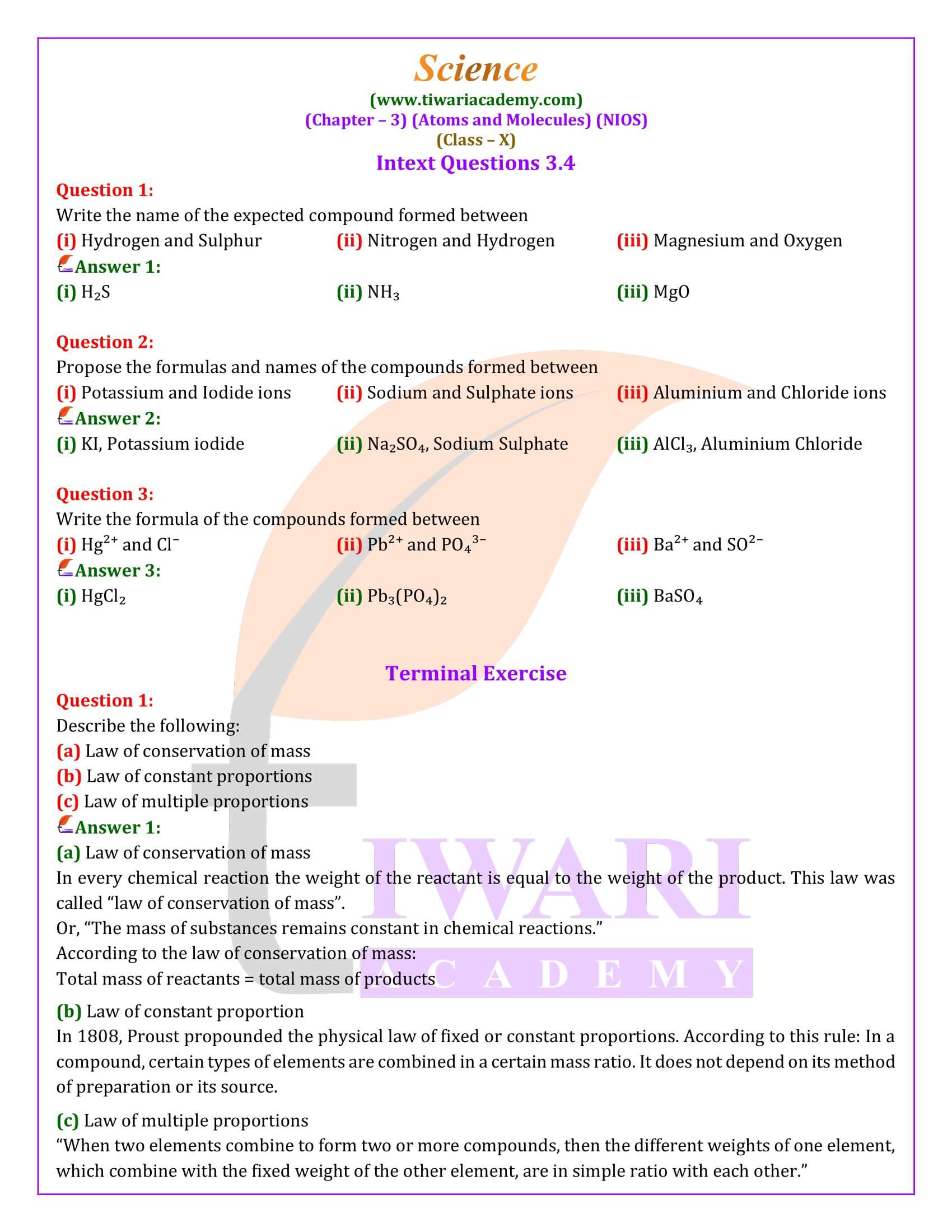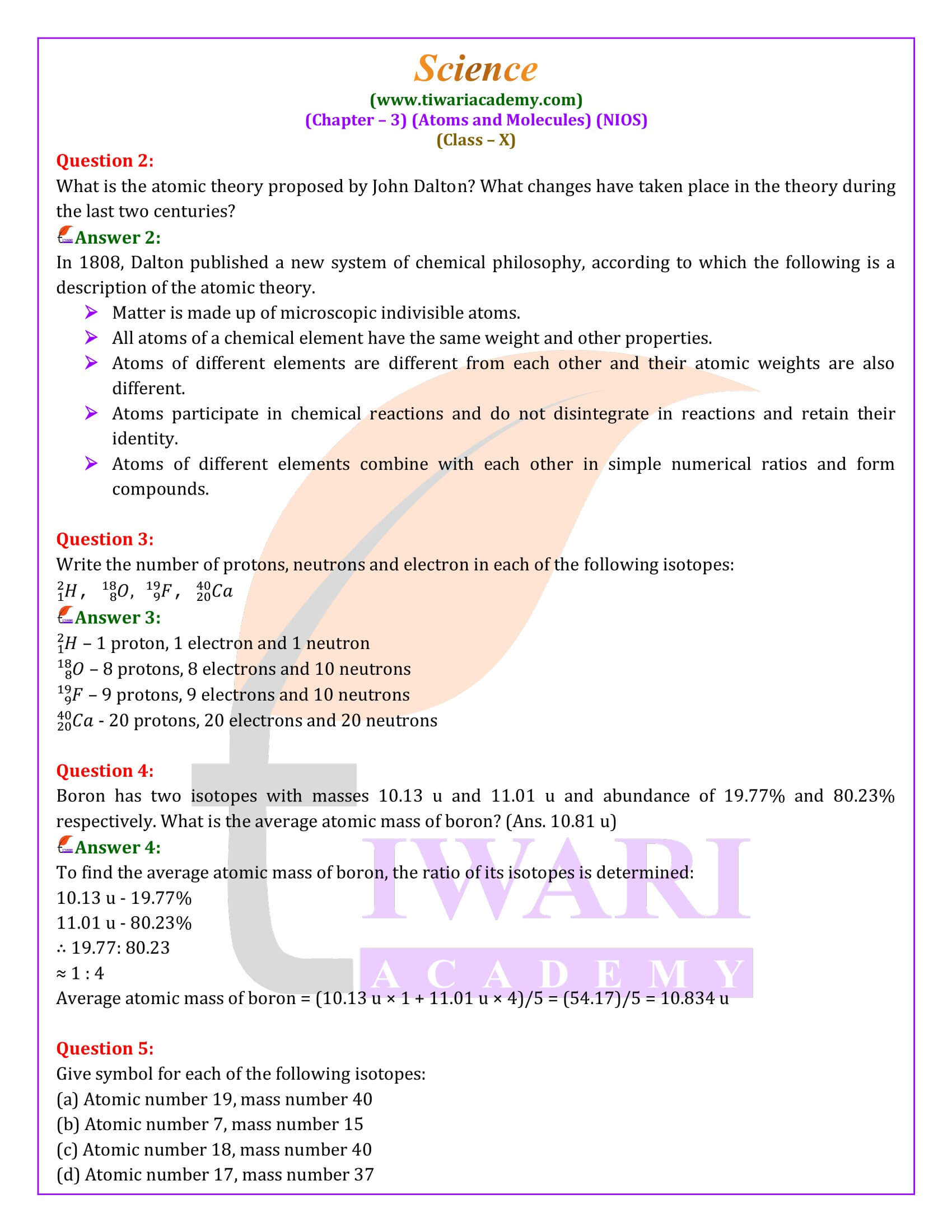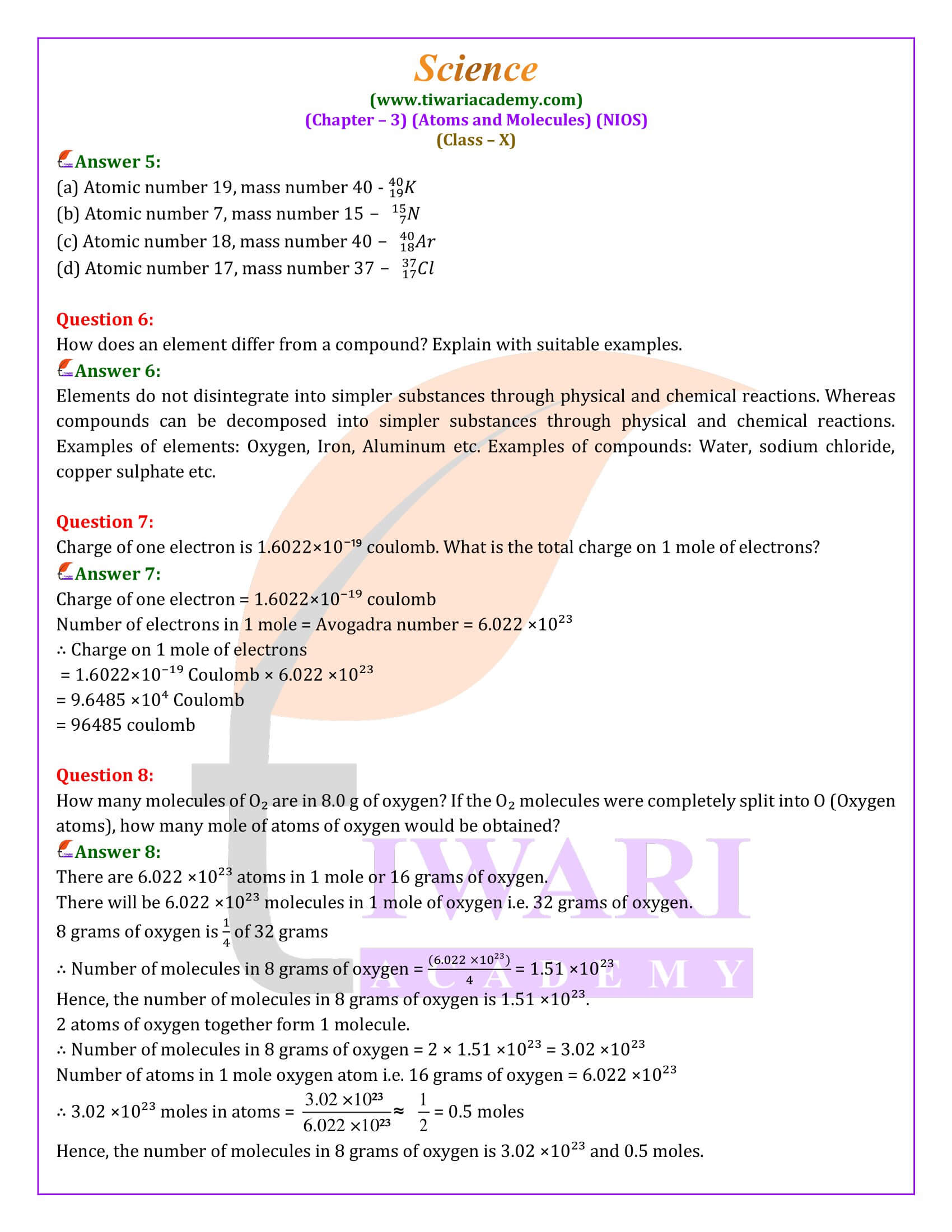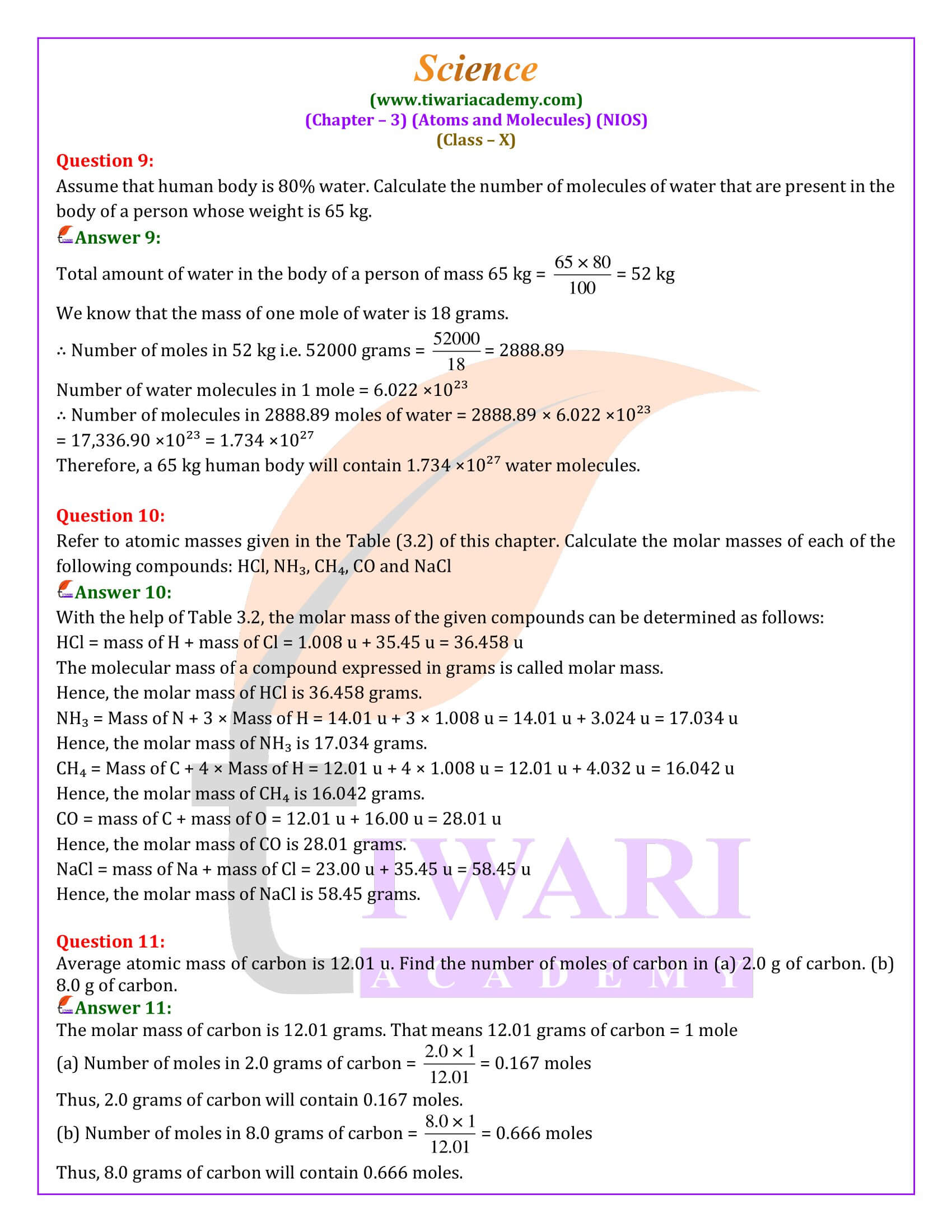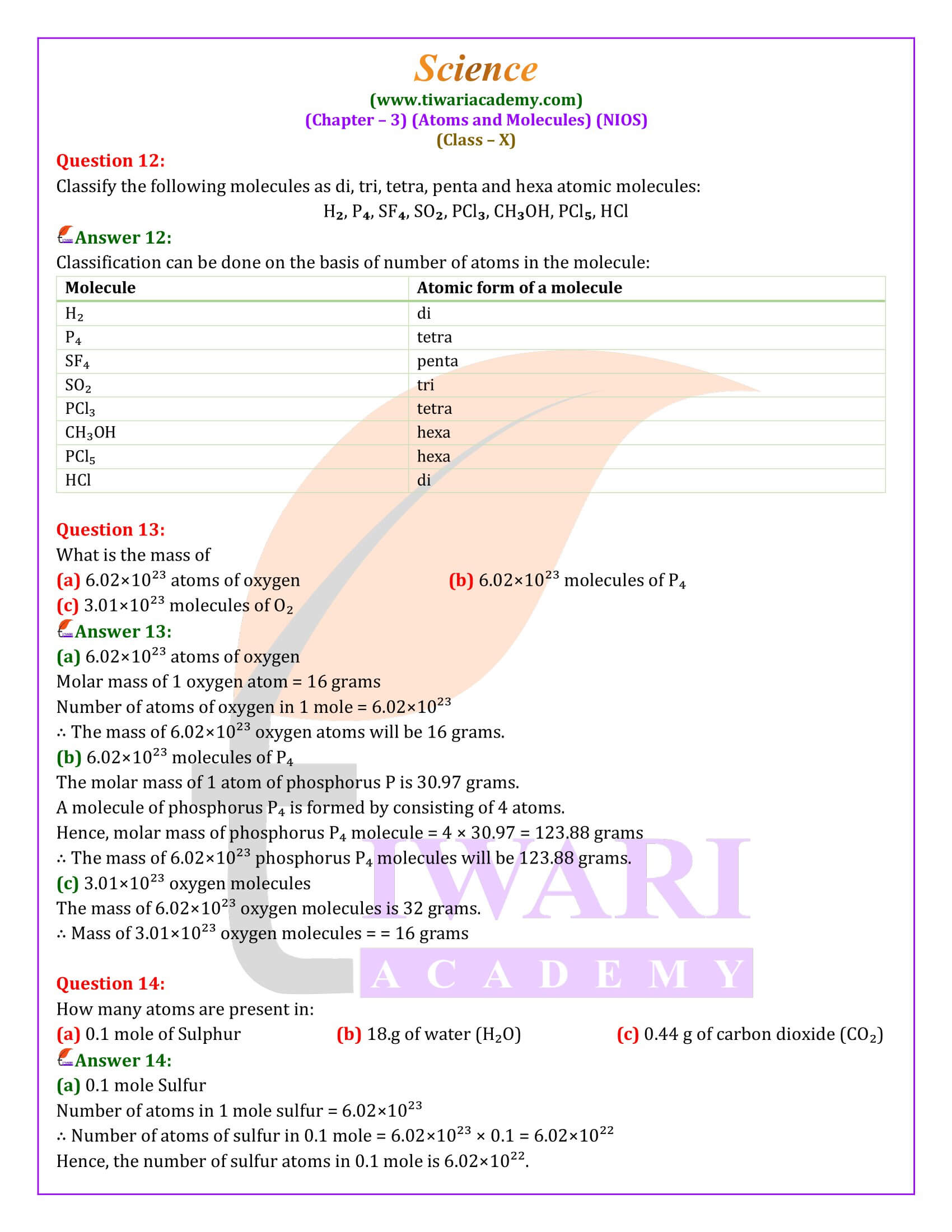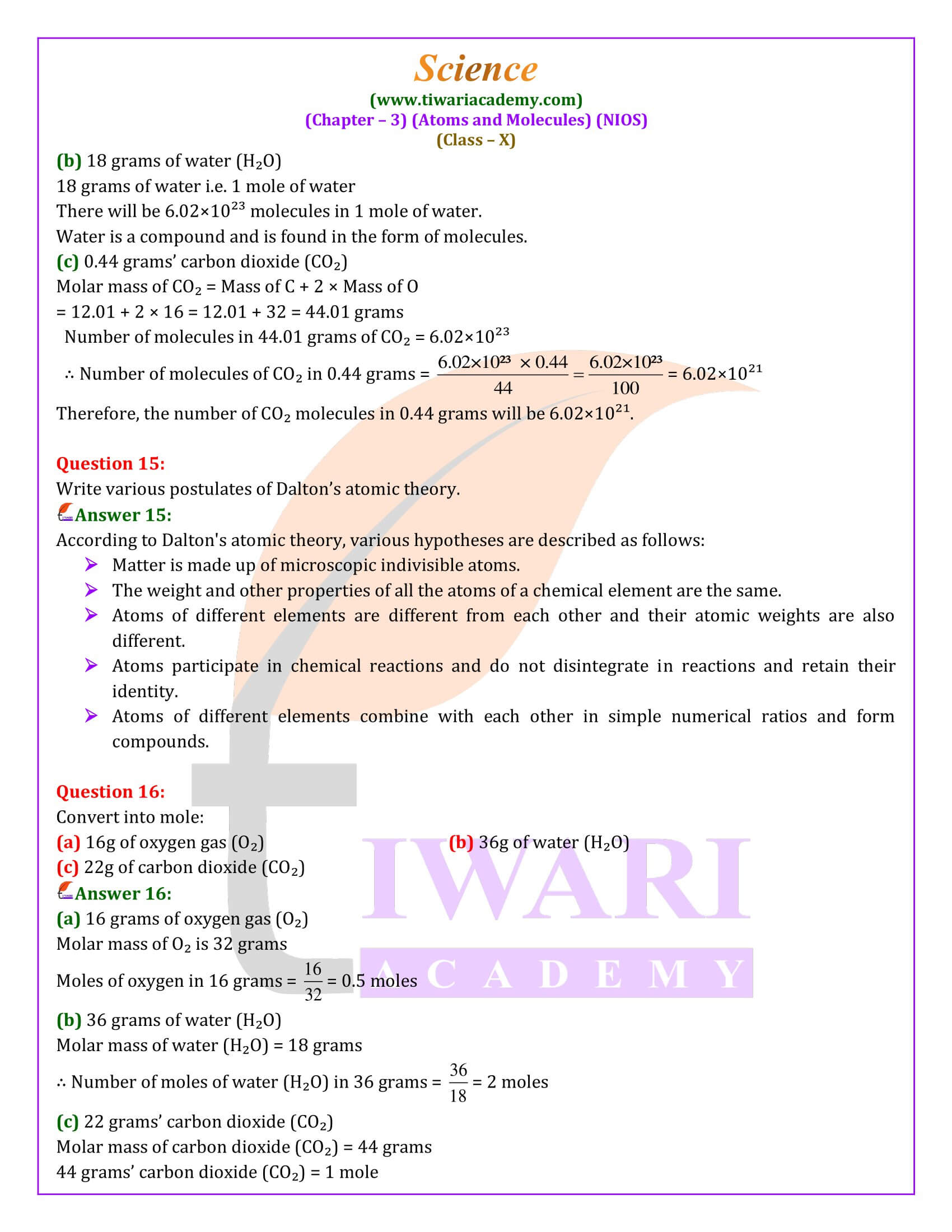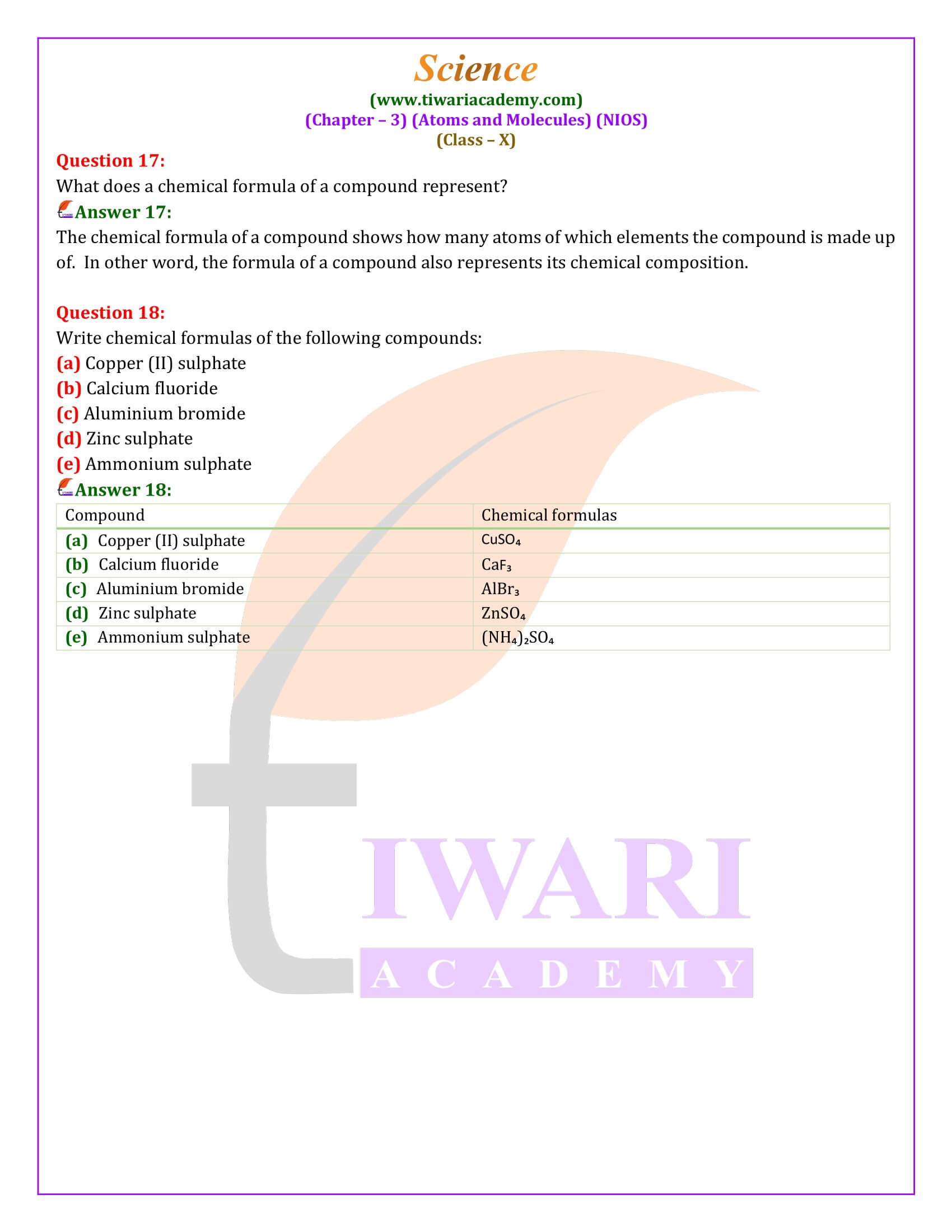NIOS Class 10 Science Chapter 3 Atoms and Molecules solutions in Hindi and English Medium updated for new session. Students of National Institute of Open Schooling can take help in science chapter 3 with question answers and explanation.
Atoms and Molecules – The Building Blocks of Matter
Exploring the Essence of Matter: Matter, as we perceive it, comprises various forms, ranging from the air we breathe to the solid ground under our feet. But what constitutes matter at its most fundamental level? This inquiry leads us to the intriguing world of atoms and molecules, the smallest units retaining the chemical properties of elements and compounds.
The Dawn of Atomic Theory
The contemplation of matter’s divisibility traces back to ancient civilizations. Around 500 B.C., Maharishi Kanad from India introduced the idea of indivisible particles called ‘PARMANU’. Similarly, the ancient Greek philosophers Democritus and Leucippus proposed the concept of ‘atoms’, laying down the groundwork for future scientific exploration.
The Law of Chemical Combinations
The 18th century marked significant progress in chemical sciences, primarily due to Antoine Lavoisier’s meticulous experiments. His studies led to the formulation of the law of conservation of mass. Almost concurrently, Joseph Proust established the law of definite proportions, emphasizing that a chemical compound always contains its component elements in fixed ratio by mass.
Dalton’s Atomic Theory
John Dalton, in the early 19th century, systematized earlier theories and experiments into his atomic theory, proposing atoms as the indivisible building blocks of matter. Despite its limitations, Dalton’s theory provided a concrete framework, leading to the development of the law of multiple proportions.
The Nature of Atoms and Molecules
Further scientific endeavors have unveiled that atoms, contrary to earlier beliefs, are divisible into smaller particles like electrons, protons, and neutrons. The configuration of these subatomic particles gives each atom its unique characteristics. Molecules, on the other hand, are aggregates of two or more atoms bonded chemically, representing the smallest unit of a chemical compound capable of a stable existence.
The Concept of Mole and Avogadro’s Number
The mole, introduced by Wilhelm Ostwald, offers a convenient way to quantify the incredibly large numbers of atoms or molecules in a given sample. Defined through Avogadro’s number (6.022×10^23), the mole bridges the microscopic world of atoms and the macroscopic world of grams.
Molar Mass and Chemical Formulas
The molar mass connects the mass of a substance to its amount in moles, providing a bridge between the atomic scale and practical chemistry. Chemical formulas, succinctly representing the composition of molecules, rely on understanding atoms’ and ions’ valencies and charges to indicate the proportions and types of atoms in a compound.
Valency and Chemical Bonding
Valency, reflecting an element’s capacity to bond with others, plays a crucial role in determining the chemical formula of compounds. The formulation of both covalent and ionic compounds necessitates a comprehension of the elements’ valency and the charges on ions, facilitating the prediction of compound compositions.
The journey from the ancient concept of indivisible particles to the modern understanding of atoms and molecules underscores the continual evolution of science. Each discovery, from Dalton’s atomic theory to the mole concept, has significantly advanced our understanding of the material world. This intricate dance of particles, governed by laws and theories, lays the foundation for the vast and vibrant tapestry of matter that constitutes our universe.
